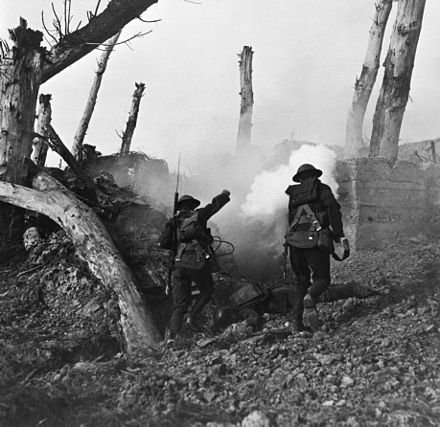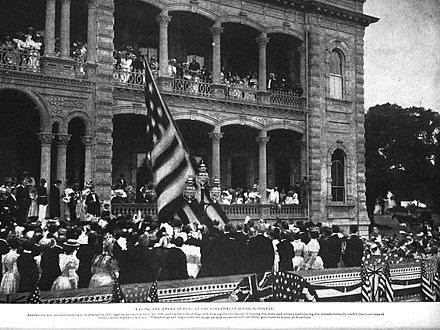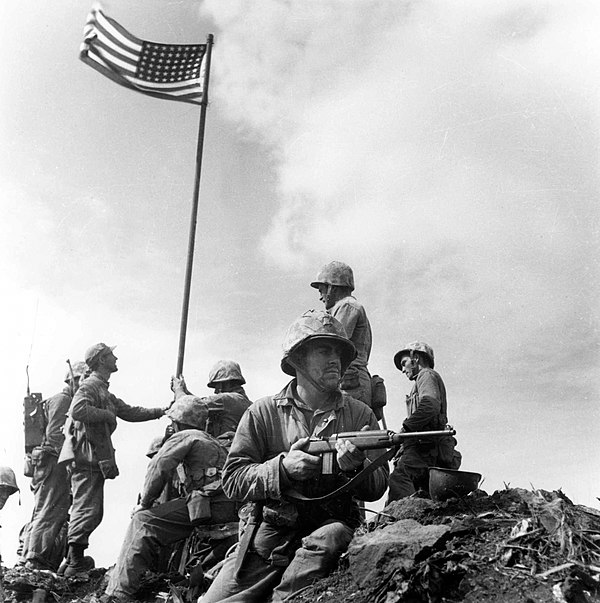Caleb Lagerwey
Eshal Warsi
AP US History 🇺🇸
454 resourcesSee Units
The United States grew into its role as a world power in the late 19th and early 20th centuries. This growth was driven by a number of factors, including the country's vast natural resources, its rapidly expanding industrial base, and its growing population. Additionally, the United States played a key role in World War I and II, which helped to establish it as a major player on the global stage. In the post-war period, the United States continued to assert its economic and political influence around the world, and by the mid-20th century, it had become one of the two dominant superpowers of the world, along with the Soviet Union.
Explain the context in which America grew into its role as a world power
Economy
The United States experienced a significant economic transformation in the late 19th and early 20th centuries, as it transitioned from a largely rural, agricultural economy to an urban, industrial economy. The US economy grew into a major world importer and exporter, eventually becoming the world’s biggest economy (as measured by Gross Domestic Product, or GDP) by the 1920s.
This transformation was driven by several factors, including the growth of large corporations, advances in technology and transportation, and an influx of immigrants who provided a large and growing labor force. The growth of large companies, known as trusts, and the increasing concentration of wealth and power in the hands of a few large corporations, led to the rise of industrial capitalism, which shaped the economy of the United States during the 20th century.
On the other hand, the Great Depression challenged US politicians to come up with new solutions to increasing economic instability. Policymakers and politicians in the United States implemented a number of policies aimed at addressing the economic and social problems caused by the depression.

Image Courtesy of Wikipedia
President Franklin D. Roosevelt's New Deal was the most significant of these policies. It introduced a number of social welfare programs and government-funded public works projects, as well as financial and agricultural reforms. The New Deal also expanded the role of the federal government in the economy, and established new regulatory agencies to oversee key sectors of the economy.
These policies and programs laid the foundation for the modern American welfare state and helped to redefine the goals and ideas of American liberalism, which had traditionally emphasized individualism and laissez-faire economics.
Technology & Migration
Thanks to new technologies that spread faster than ever, the US changed into a consumer culture, with fewer goods being made inside the home and more and more goods being “imported” from stores. Automobiles and radio made it possible for large numbers of people to access information, entertainment, and advertising on a scale that was previously unimaginable.
The economic and political changes in the world, such as the World War I, the Russian Revolution, and the decolonization of Africa and Asia, led to large-scale international migration, as people moved in search of better economic opportunities, political freedom, or to escape persecution. These migrations brought new cultures and diversity to the US.

Image Courtesy of Wikipedia
People also migrated within the US. Suburbanization and migration westward and southward had a massive impact on transportation and industry.
Foreign Policy
The US grew into a dominant position militarily and politically through this time period. At the start of the period, the US was generally uninvolved in overseas events other than through trade.
In the late 19th century and early 20th century, the United States began to assert its territorial ambitions and acquisitions in the Western Hemisphere and the Pacific. This expansion was driven by a number of factors, including economic interests, political considerations, and a desire for strategic advantage. The U.S. annexed Hawaii in 1898 and acquired Puerto Rico, Guam and Philippines from Spain, the U.S. also acquired the Panama Canal Zone, which was a significant strategic acquisition.

Image Courtesy of Wikipedia
These territorial acquisitions and expansion led to heightened public debates over America's role in the world. Some Americans viewed expansion as a means of fulfilling the nation's Manifest Destiny and spreading American values and institutions to other parts of the world. Others opposed expansion, arguing that it would lead to entanglement in foreign conflicts and the erosion of American values and traditions.
The U.S. entered World War I in 1917, and its participation played a key role in the eventual defeat of the Central Powers. Despite being a huge provider of loans and military equipment, the US promptly returned to isolationism under new presidential administrations.
U.S. participation in World War II, which lasted from 1939 to 1945, had a profound impact on American society and economy. The war effort required the mobilization of the American economy, which led to the end of the Great Depression and the country's transformation into the "arsenal of democracy." Millions of Americans were drafted or volunteered to fight, and the war effort required the involvement of millions of Americans on the home front as well, including women and minorities, who participated in the war effort in unprecedented numbers.

Image Courtesy of Wikipedia
The victory of the United States and its allies over the Axis powers in World War II led to the emergence of the United States as a superpower. The U.S. played a key role in the formation of the United Nations and the establishment of the Bretton Woods system, which helped to rebuild the post-war international economy. Additionally, the U.S. had developed atomic weapons during the war and it was the only country in possession of those weapons. This gave the country a powerful leverage in the Cold War that followed.
The U.S. emerged from World War II as the world's leading economic and military power, and its leadership role in the post-war period set the stage for American dominance in international affairs during the second half of the 20th century and beyond.
🎥 Watch: AP US History - Period 7 Review
Browse Study Guides By Unit
🌽Unit 1 – Interactions North America, 1491-1607
🦃Unit 2 – Colonial Society, 1607-1754
🔫Unit 3 – Conflict & American Independence, 1754-1800
🐎Unit 4 – American Expansion, 1800-1848
💣Unit 5 – Civil War & Reconstruction, 1848-1877
🚂Unit 6 – Industrialization & the Gilded Age, 1865-1898
🌎Unit 7 – Conflict in the Early 20th Century, 1890-1945
🥶Unit 8 – The Postwar Period & Cold War, 1945-1980
📲Unit 9 – Entering Into the 21st Century, 1980-Present
📚Study Tools
🤔Exam Skills
👉🏼Subject Guides
📚AMSCO Notes

Fiveable
Resources
© 2025 Fiveable Inc. All rights reserved.